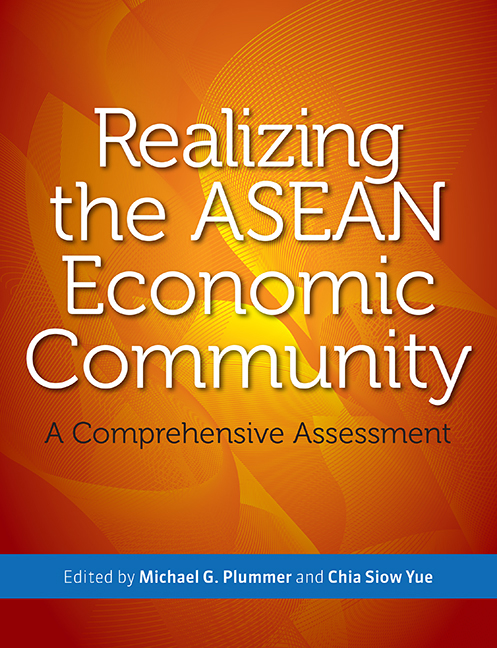Book contents
- Frontmatter
- Contents
- Illustrations
- Foreword
- Executive Summary
- Acknowledgements
- About the Contributors
- 1 Introduction
- 2 Regional Market for Goods, Services, and Skilled Labor
- 3 Competition Policy, Infrastructure, and Intellectual Property Rights
- 4 The AEC and Investment and Capital Flows
- 5 Narrowing the Development Gap in ASEAN
- 6 Competitiveness and Leverage
- 7 Benefits of the AEC
- References
- Appendix A AEC Components
- Appendix B The CGE Model
- Appendix C Developments in Logistics and Aviation
- Appendix D AEC Blueprint Excerpt
- Appendix E ASEAN Free Trade Agreements
- Appendix F ASEAN Member States' Free Trade Agreements
- Appendix G ASEAN Imports and Exports, 2000 and 2006
- Index
Appendix C - Developments in Logistics and Aviation
Published online by Cambridge University Press: 21 October 2015
- Frontmatter
- Contents
- Illustrations
- Foreword
- Executive Summary
- Acknowledgements
- About the Contributors
- 1 Introduction
- 2 Regional Market for Goods, Services, and Skilled Labor
- 3 Competition Policy, Infrastructure, and Intellectual Property Rights
- 4 The AEC and Investment and Capital Flows
- 5 Narrowing the Development Gap in ASEAN
- 6 Competitiveness and Leverage
- 7 Benefits of the AEC
- References
- Appendix A AEC Components
- Appendix B The CGE Model
- Appendix C Developments in Logistics and Aviation
- Appendix D AEC Blueprint Excerpt
- Appendix E ASEAN Free Trade Agreements
- Appendix F ASEAN Member States' Free Trade Agreements
- Appendix G ASEAN Imports and Exports, 2000 and 2006
- Index
Summary
LOGISTICS SECTOR DEVELOPMENT IN ASEAN
Logistics is an important aspect of economic integration. An effective logistics system results from efficient coordination of infrastructure development across a region. A key issue is multimodal transportation. De Souza et al. (2007) note that the literature on this topic outlines the need for intermodal transport networks, benchmarking of intermodal freight transport, and evaluation of the cost and time benefits of using intermodal transport.
Several methods have been used to study multimodal transport. Case study research focusing on cost and time shows the cost and efficiency advantages of different combinations of routes and modes for freight transportation in ASEAN (Banomyong 2000, 2004). Studies on regional issues related to multimodal transport have been conducted in the EU (Lewis et al. 2001), APEC (Goetz et al. 2002), etc. The focus of these studies ranges from the benchmarking of costs and analysis of issues related to intermodal transport to theoretical studies of these transport networks (Stank and Roath 1998).
Furthermore, Arnold and Villareal (2002) examine the logistics of selected commodities produced in the Philippines for export. They assess the effects of logistics impediments on the total supply chain, market price, and household budgets. Arnold (2003) has also studied logistics development and trade facilitation in the Lao PDR. He identifies a number of problems in the transport network connected to the Lao PDR as well as in financial institutions, customs procedures and duties, and trade and transit agreements) and suggests improvements to facilitate trade. Related to this, Goh and Ang (2000) examine logistics development in the Greater Mekong Sub-region.
Carana (2004) examines the impact of transport and logistics on Indonesia's trade competitiveness. It investigates constraints on transport modes, intermodal networks, infrastructure, customs practices and procedures, trade-related banking and financial practices, transport intermediaries as well as the overall development of Indonesia's transport and logistics system. ALMEC (2002) analyzes the development of the maritime transport system in ASEAN, including the liberalization of shipping, port systems, and logistics development.
- Type
- Chapter
- Information
- Realizing the ASEAN Economic CommunityA Comprehensive Assessment, pp. 195 - 206Publisher: ISEAS–Yusof Ishak InstitutePrint publication year: 2009

